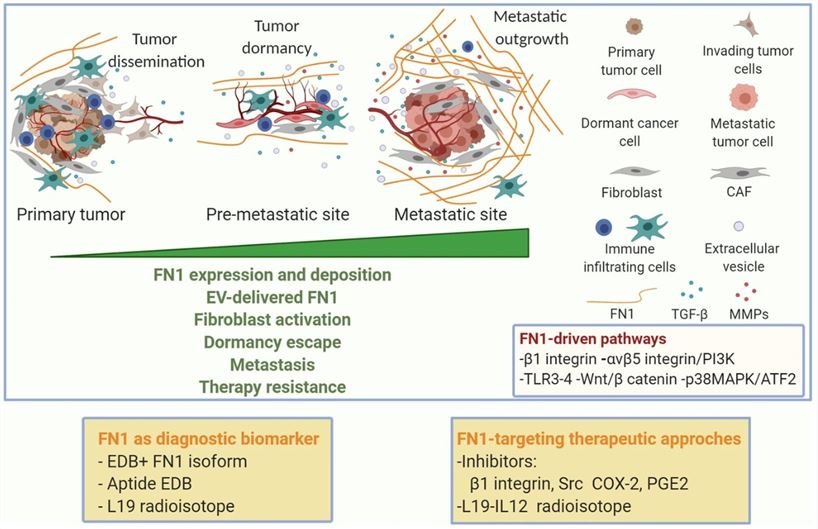What is FN1 Protein
The Fibronectin 1 (FN1) protein, encoded by the FN1 gene, stands at the nexus of cellular interactions, orchestrating fundamental processes critical for tissue homeostasis.
FN1 is a high-molecular-weight glycoprotein embedded in the extracellular matrix (ECM). The FN1 gene, residing on chromosome 2, encodes this protein. Structurally, FN1 is characterized by modular domains, including type I, II, and III modules, which facilitate its diverse functions.
The Function of FN1 Protein
- Cell Adhesion
FN1 plays a pivotal role in cell adhesion by serving as a molecular bridge between cells and the ECM. This is achieved through its interaction with integrins, a family of cell adhesion receptors. Such interactions are paramount in processes like embryonic development, tissue repair, and the maintenance of tissue architecture.
- Cell Migration
In cell migration, FN1 acts as a guiding force. By interacting with integrins on the cell surface, FN1 initiates intracellular signaling pathways that regulate the cytoskeleton. This dynamic regulation enables cells to migrate with precision, a fundamental process in wound healing and tissue development.
- Regulation of Signaling Pathways
FN1 actively participates in signaling pathways, influencing the activities of growth factors and cytokines. This involvement extends to the regulation of cell proliferation and differentiation, underscoring its importance in maintaining tissue homeostasis.
FN1-Related Diseases
- Cancer
Elevated FN1 expression is a common hallmark in cancer. Its association with increased tumor aggressiveness and metastasis makes it a potential prognostic marker. In breast and pancreatic cancers, FN1 levels correlate with a poorer clinical outcome, emphasizing its significance in cancer biology.
- Fibrosis
FN1 is implicated in fibrotic diseases, contributing to tissue scarring and dysfunction. Conditions like liver fibrosis and pulmonary fibrosis showcase the detrimental effects of FN1 dysregulation, underlining its role in the pathogenesis of fibrotic disorders.
- Cardiovascular Diseases
FN1's involvement in cardiovascular diseases is evident in atherosclerosis and cardiac remodeling. It influences the migration of vascular smooth muscle cells and platelet adhesion, playing a pivotal role in the formation of atherosclerotic plaques and cardiac remodeling post-injury.
 Figure 1. FN1 as player in metastatic process and as diagnostic and therapeutic target (Spada, S., et al. 2021)
Figure 1. FN1 as player in metastatic process and as diagnostic and therapeutic target (Spada, S., et al. 2021)FN1 Related Signaling Pathways
- Integrin Signaling
FN1's interaction with integrins initiates integrin signaling, a cascade of events regulating cell adhesion, migration, and survival. Dysregulation of this pathway, often associated with abnormal FN1 expression, contributes to cancer progression and metastasis.
- PI3K/Akt Pathway
FN1 activates the PI3K/Akt pathway, a central signaling cascade governing cell survival and proliferation. In cancer, aberrant activation of this pathway by FN1 promotes cell survival, providing a potential target for therapeutic interventions.
- Transforming Growth Factor-Beta (TGF-β) Pathway
FN1 is intricately linked to the TGF-β pathway, a regulator of cell differentiation and tissue homeostasis. Dysregulation of this pathway by FN1 contributes to fibrotic diseases, highlighting its role in the pathological remodeling of tissues.
Applications of FN1 in Biomedical Research
- Biomarker for Disease Diagnosis
Aberrant FN1 expression serves as a potential biomarker for various diseases. Detection of FN1 levels in patient samples can aid in early diagnosis and prognosis, particularly in conditions like cancer and fibrosis.
- Therapeutic Target in Cancer Treatment
FN1, implicated in cancer progression, emerges as a promising therapeutic target. Strategies modulating FN1 expression or disrupting its interactions with integrins could inhibit tumor growth and metastasis. Targeting FN1-related signaling pathways, such as the PI3K/Akt pathway, holds potential for innovative cancer treatments.
- Tissue Engineering and Regenerative Medicine
FN1's role in cell adhesion and migration makes it invaluable in tissue engineering. Incorporating FN1 into scaffolds enhances cell attachment and promotes tissue regeneration, offering solutions for repairing damaged tissues.
- Drug Development
Understanding FN1-related signaling pathways opens avenues for drug development. Targeting these pathways with small molecules or biologics could be explored for conditions where FN1 dysregulation contributes to disease progression.
In the intricate tapestry of cellular biology, FN1 emerges as a linchpin, influencing cellular functions and participating in signaling pathways critical for tissue homeostasis. From its structural intricacies to its involvement in diseases, FN1 continues to captivate researchers, offering a landscape rich with potential for diagnostic, therapeutic, and regenerative advancements in biomedical sciences. As research endeavors unravel the nuances of FN1, the prospect of transformative breakthroughs in understanding and treating diseases beckons on the horizon.
Recommended Products for FN1 Protein
| Cat.# | Species | Product name | Source (Host) | Tag |
|---|---|---|---|---|
| FN1-108H | Human | Active Recombinant Human FN1 | E.coli | N/A |
| FN1-33H | Human | Recombinant Human FN1 protein, T7/His-tagged | E.coli | T7/His |
| FN1-12950H | Human | Recombinant Human FN1, His-tagged | E.coli | His |
| FN1-711H | Human | Recombinant Human FN1, His tagged | Human Cell | His |
| FN1-01H | Human | Recombinant Human FN1 Protein, T7-His-TEV-tagged | E.coli | T7-His-TEV |
| FN1-1811H | Human | Recombinant Human FN1 protein, GST-tagged | E.coli | GST |
| FN1-5947M | Mouse | Recombinant Mouse FN1 Protein | Mammalian Cell | His |
| FN1-3296M | Mouse | Recombinant Mouse FN1 Protein, His (Fc)-Avi-tagged | HEK293 | His (Fc)-Avi |
| Fn1-761R | Rat | Recombinant Rat Fn1 protein, His-tagged | E.coli | His |
| FN1-648C | Chicken | Recombinant Chicken FN1 protein, His-tagged | E.coli | His |
Reference
- Spada, S., et al. Fibronectin as a multiregulatory molecule crucial in tumor matrisome: from structural and functional features to clinical practice in oncology. J Exp Clin Cancer Res. 2021, 40: 102.

